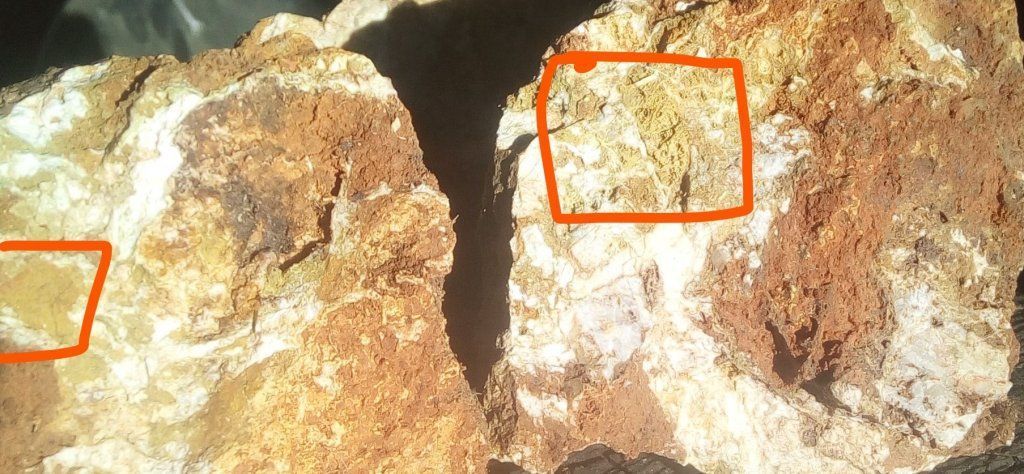Sooo just to reinvigorate an old thread. https://www.prospectingaustralia.com/forum/viewtopic.php?id=29669 I was up on the eskdale spur on Saturday to help my dopey son & soninlaw recover their Motorbikes that they had to leave in the bush for a week after a communal brain fart last weekend. (long story but it turned out ok). After Operation KTMaha was deemed to be a success Ie they found there Bikes. I decided to go and do a bit of prospecting.
Ive been looking for a particular reef that was worked by several different companies between 1880 and 1910. said to be 6ft wide carring gold on the hanging wall for about a ft. So I found a reef crossing a track that was 6odd ft wide but couldnt find any workings. Took some grab samples and busted them up when I got home.'.... Aaand Ive got a truckload of this greenish yellow mineral with a waxy appearance that is heavy. Im wondering if it is just a limonite suodomorph. IE half way to Limonite. Hopefully goldierocks or Swright or Heatho can help. I have enough to send to someone for testing.
took a couple of pics in the rock

Ive been looking for a particular reef that was worked by several different companies between 1880 and 1910. said to be 6ft wide carring gold on the hanging wall for about a ft. So I found a reef crossing a track that was 6odd ft wide but couldnt find any workings. Took some grab samples and busted them up when I got home.'.... Aaand Ive got a truckload of this greenish yellow mineral with a waxy appearance that is heavy. Im wondering if it is just a limonite suodomorph. IE half way to Limonite. Hopefully goldierocks or Swright or Heatho can help. I have enough to send to someone for testing.
took a couple of pics in the rock




